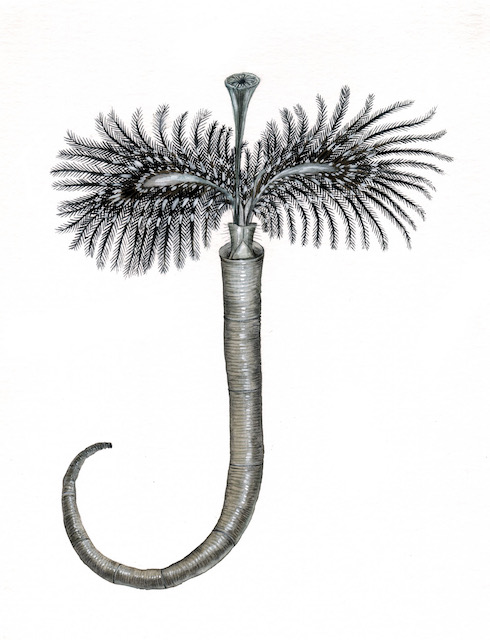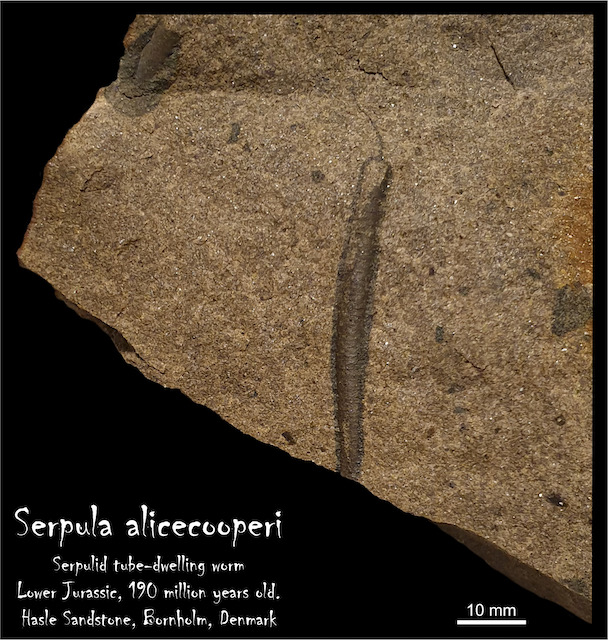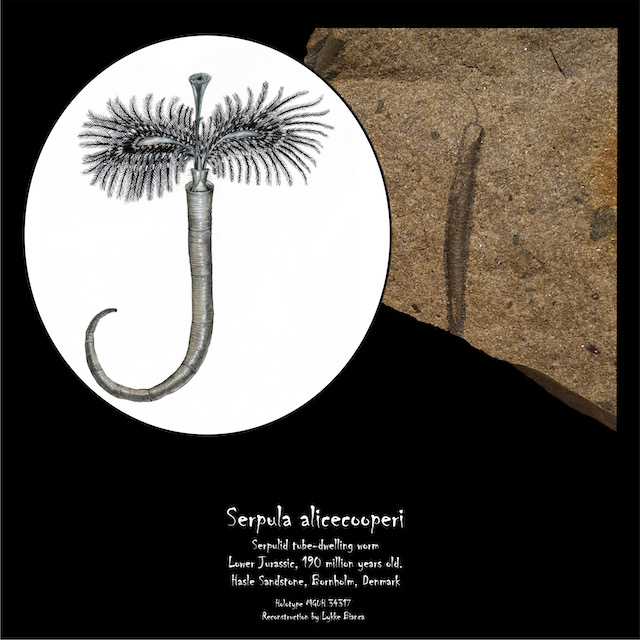
A new fossil has just been named Serpula alicecooperi in honour of the American singer and performer, Alice Cooper.
Alice Cooper joins the rank of several other great rockstars like Tony Iommi, Lemmy, King Diamond and The Rolling Stones to name but a few, who all have fossils named in their honour.

The fossil is 190 million years old, and represents a serpulid worm, a kind of marine worm who constructed a calcific tube it lived in. They live by filtering the sea water with their crown of tentacles, and when they feel threatened, they can retract their bodies into the tube that closes with a lid. The fossil was found by amateur geologist Mette Hoftstedt in the 190 million years old Hasle Sandstone on the Danish Island of Bornholm and was handed over to the researchers on Geomuseum Faxe in Denmark to be studied and identified. The study describing and naming the fossil was conducted by researchers Tomas Koči from the Natural History Museum in Prague, Czech Republic, Jesper Milàn and Sten Lennart Jakobsen from Geomuseum Faxe, Denmark and Arden Basforth from the Natural History Museum of Denmark.

Palaeontologist Jesper Milàn from Geomuseum Faxe in Denmark says: “When we studied the fossil, it quickly became clear that it was a new and unknown species of serpulid worm we were dealing with. Being both a palaeontologist and a huge fan of metal and rock music, I have always thought that if somebody deserved to have a fossil named in his honour, it should be Alice for his enormous impact on the musical scene during the last half decade, and his music has been firmly playing in the background during much of my research."
“Serpulid worms were pioneers in their particular lifestyle when they first evolved, and they became an abundant element in the ocean’s ecosystems at the beginning of the Jurassic period, about 190 million years ago, and they are still around to this very day. Alice was a pioneer of the chock rock scene when he arrived during the late sixties, and he is still around to this very day,” Jesper Milàn says with a big smile.
The scientific paper is published in Bulletin of the Geological Society of Denmark and can be downloaded here.

Kočí, T., Milàn, J., Jakobsen, S. L. & Bashforth, A. 2024. Serpula? alicecooperi sp. nov. – a new serpulid from the Lower Jurassic (Pliensbachian) Hasle Formation of Bornholm, Denmark. Bulletin of the Geological Society of Denmark 73, 41-56.
- Serpula alicecooperi photo by Jesper Milàn)
- Artistic reconstruction of Serpula alicecooperi as it might have looked when it was alive. Illustration by artist Lykke Bianca
- Graphic combining the fossil of Serpula alicecooperi and the artistic illustration of how it looked when it was alive by Jesper Milàn & Lykke Bianca